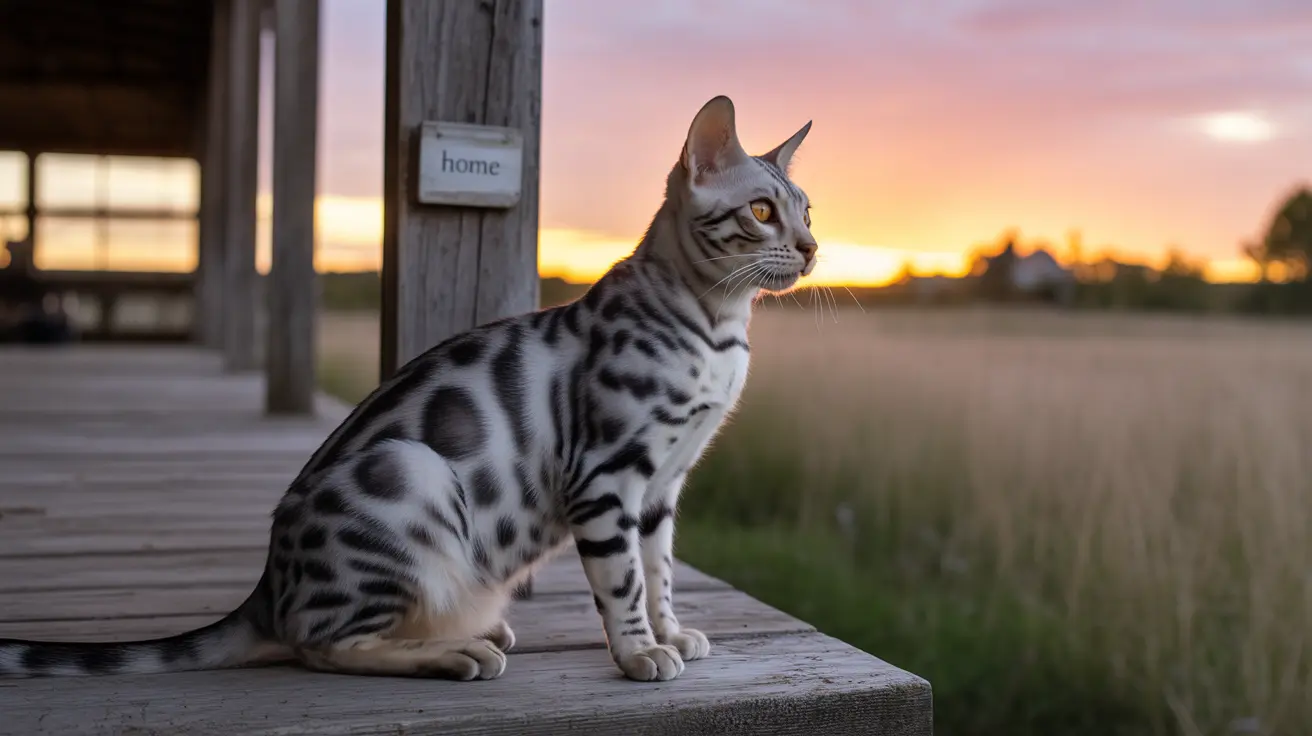Have you ever wondered how your cat seems to know exactly when it's dinner time, or why they wake you up at the same hour every morning? The answer lies in your cat's sophisticated internal clock, a fascinating biological system that helps them navigate their daily routines with remarkable precision.
In this comprehensive guide, we'll explore how cats perceive time through their internal clock mechanisms, environmental cues, and learned behaviors. Understanding these aspects can help you better care for your feline friend and maintain routines that align with their natural rhythms.
The Science Behind Your Cat's Internal Clock
Cats possess a complex biological clock system, known as the circadian rhythm, which operates on roughly 24-hour cycles. This internal timekeeper regulates everything from sleep patterns to hormone production, helping cats maintain consistent daily routines even without external time cues.
The feline circadian rhythm is primarily influenced by natural light cycles, which explains why cats are most active during dawn and dusk. This internal mechanism evolved to help them optimize their hunting activities when prey is most abundant.
How Cats Track Time Through Environmental Cues
While cats don't understand clock time like humans do, they excel at recognizing patterns and environmental signals that help them track time throughout the day. These cues include:
- Changes in natural light levels
- Regular household sounds and activities
- Consistent feeding schedules
- Family members' routines
- Environmental temperatures
The Role of Memory in Feline Time Perception
Cats demonstrate impressive abilities to remember and anticipate regular events. Their episodic-like memory allows them to form associations between specific activities and time periods, helping them predict when certain events should occur.
This memory system enables cats to:
- Anticipate feeding times
- Predict when family members typically return home
- Know when to expect play sessions
- Prepare for regular daily activities
Supporting Your Cat's Natural Time Sense
Understanding your cat's internal clock can help you create an environment that supports their natural rhythms. Consider these practical tips:
- Maintain consistent feeding times
- Schedule play sessions during their natural active periods
- Keep a regular household routine
- Respect their natural sleep-wake cycles
- Provide environmental enrichment aligned with their active times
Frequently Asked Questions
How does a cat's internal biological clock, or circadian rhythm, affect its daily behavior and sleep patterns?
A cat's internal clock regulates their sleep-wake cycles, activity levels, and hormone production throughout the day. This biological system typically follows a crepuscular pattern, making cats most active during dawn and dusk, with multiple shorter sleep periods between these peak activity times.
Can cats anticipate mealtimes and other routines without being told the exact time?
Yes, cats can anticipate regular events through their internal clock combined with environmental cues. They form strong associations between daily patterns, light levels, and recurring activities, allowing them to predict when certain events should occur.
What environmental cues do cats use to help regulate their sense of time?
Cats rely on various environmental signals including changes in natural light, household sounds, temperature fluctuations, and human activity patterns. These cues help them maintain their daily rhythm and anticipate regular events.
Why are cats most active during dawn and dusk, and how is this linked to their internal clock?
Cats' internal clocks evolved to match their natural hunting patterns, making them most active during twilight hours when prey is typically more abundant. This crepuscular nature is deeply ingrained in their biological timing system.
How can pet owners support their cat's internal clock to promote healthy routines and reduce stress?
Pet owners can support their cat's internal clock by maintaining consistent daily routines, providing regular meal times, scheduling play sessions during natural active periods, and respecting their natural sleep-wake cycles. This consistency helps reduce stress and promotes better overall well-being.
Conclusion
Your cat's internal clock is a sophisticated system that helps them navigate daily life with remarkable precision. By understanding and working with their natural timing mechanisms, you can create an environment that supports their well-being and strengthens your bond with them.
Remember that while cats don't read clocks like we do, their internal timing system is highly efficient and deserves our respect and accommodation. Supporting these natural rhythms will lead to a happier, healthier cat and a more harmonious household.






